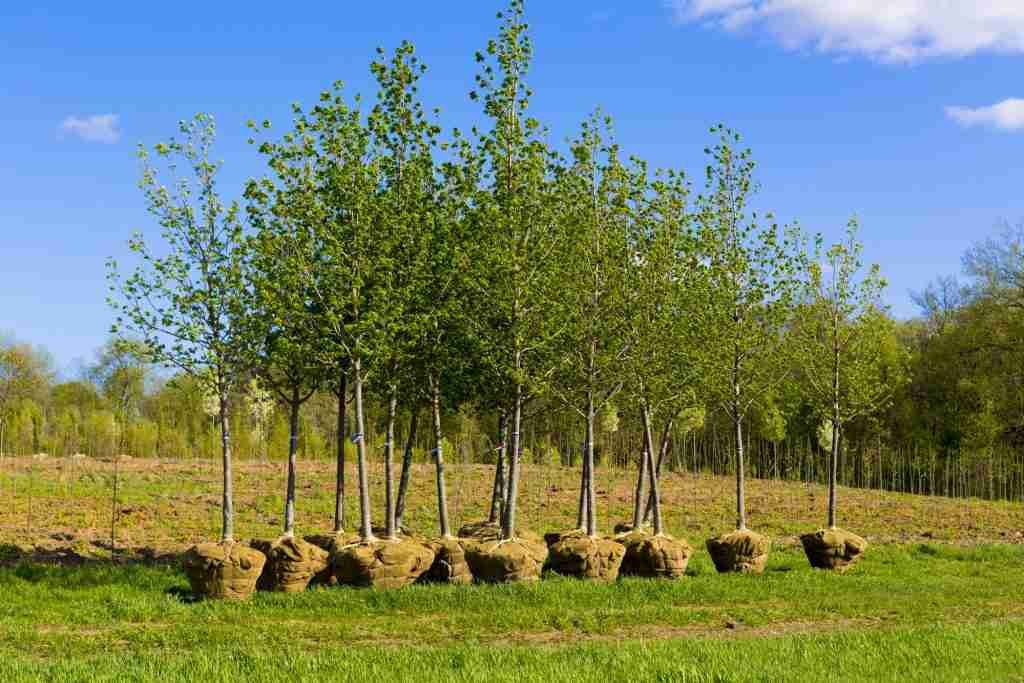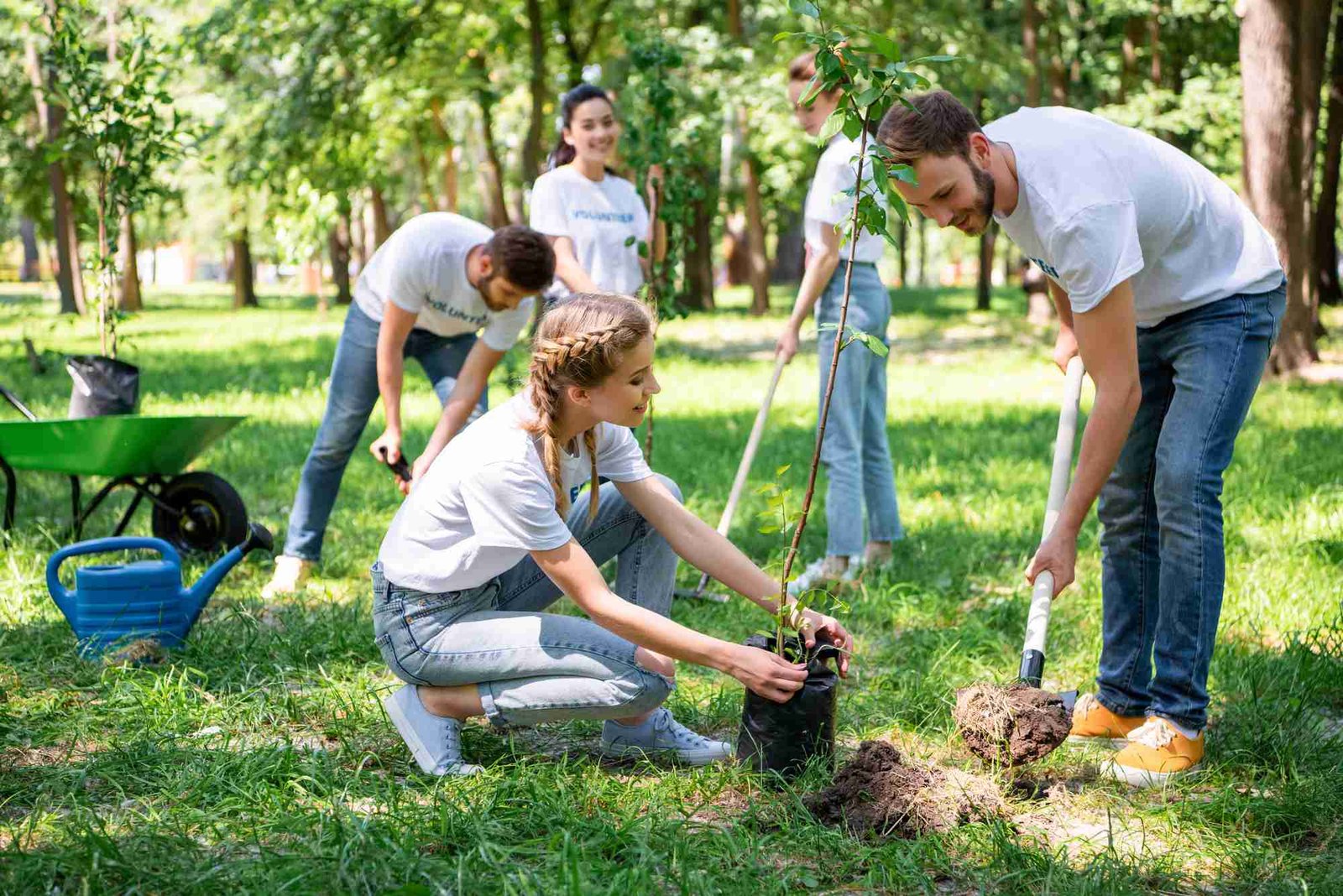If you decide to support a charity that plants trees, it’s important to know how and where different organizations operate. Not all tree-planting charities are equal. Whether you want a single tree planted in someone’s memory or an entire grove planted as a wedding gift to friends, understanding a charity’s purpose and knowing how effective and efficient they are matters.
It’s important to know how planting trees can help humanity understand how charities differ. Planting more trees helps preserve and improve the planet’s health, but some charity tree projects do more. How and where they plant trees can mean additional benefits to humans and animals.
How Trees Help the Planets Health
Trees, like other plants, absorb carbon dioxide and release oxygen as part of the photosynthesis (converting light into chemical energy for fuel) process. Carbon dioxide gases contribute to global warming, so more trees taking it out of the atmosphere helps fight climate change. According to earthwatch.org, “a single tree can absorb as much as 22kg of carbon each year… and… produces almost 118kg of oxygen every year.”
How Planting Trees Help Animals
Wild animals, birds, and insects all need a supportive place to live with sufficient food to eat. Wooded areas provide both food and shelter for thousands of species. For example, birds, squirrels, bats, and other small animals make their homes in trees. Insects, from spiders to butterflies, rely on woodlands. Bees visit flowering trees for their nectar and pollen, and some butterflies lay eggs on tree leaves. These are only a few examples of how trees support living creatures.
How Trees Help People
Obviously, cleaner air with less CO2 and more oxygen is healthier for humans, but planting trees does more for humanity. For example, cities benefit from more trees because trees filter the air and reduce pollution by trapping things like ozone, ammonia, and sulfur dioxide in their leaves. Trees planted in urban settings also help keep temperatures down in the summer. They provide shade and reflect the sun away from pavement and buildings that typically absorb heat.
Medical studies have proven that people who walk in nature, like through woods, feel better because of reduced cortisol levels and boosted mood hormones.
All living creatures are interdependent, so the trees that shelter animals help humans, too.
Tree planting also provides work for populations that desperately need employment. Organizations that hire local people to plant the trees help the local economy. Where deforestation has destroyed farmlands, replanting trees can improve land conditions, rebuild agriculture, and feed the inhabitants.
Money raised by the charities sometimes also supports other projects. For example, while funds first go to pay for the trees, local labor, and administrative costs, sometimes money also supports hospitals, animal habitat rehabilitation or protection, and other economy-building initiatives.
Five Tree Planting Charities Making a Difference
1. Grow Trees
Grow-Trees.com allows individuals and organizations to purchase and give “eTreeCertificates” to commemorate birthdays, weddings, anniversaries, etc. The purchase must be for a minimum grove of 10 trees. The organization grows samplings in their nurseries and chooses only indigenous tree species for a region. Local laborers get paid to plant trees and sometimes build walls to protect the groves on community, government, or holy lands. Independent auditors confirm that trees people purchase are planted, and pictures are posted on social media. The local community then benefits from fruit and fodder provided by the trees.

Grow-Trees.com supports various tree-planting projects helping people and animals in India and Africa. Money raised through charity funds some important humanitarian aid and species habitat initiatives. For example, a few include:
- Trees for Delhi, India
- Trees for Tigers in the Sundarbans National Park in West Bengal, India
- Trees for Ecotourism Zuluk (Dzaluk) Sikkim, India
- Trees for Wellness supporting the Allms Hospital in Jharkhard, India
- Trees for Refugee Wellness in North Uganda
Companies and individuals can “adopt” trees for any uncompleted project shown on the website. The site indicates how many trees have been planted and how many more are needed for each. It also shows pictures and statistics for completed projects.
2. Click a Tree
Clickatree.com was established in 2020 by Chris Kaiser because, after spending years among elephants in a Thailand national park, he saw what deforestation was doing to the habitat these magnificent creatures needed. The organization plants trees in 13 countries on five continents. Their dedication to a holistic approach to planting helps ensure the trees they plant will not only survive but thrive and pay close attention to biodiversity and sustainability.

While this is a very new organization, they have accomplished a lot. Their projects provide much-needed full-time employment for local unskilled laborers. They also improve local soil and growing conditions and include fruit and nut trees to change the lives of everyone in the community.
For example, they plant 20 tree species in Ghana, including banana, cashew, and shea nut trees. In Thailand, they grow more than 40 tree species, including teak trees and cluster figs. The organization also teaches entrepreneurship so that surplus crops can make money for other basic needs.
Click a Tree allows you to plant trees for free. By signing up for their newsletter, you get your first tree planted for free. Also, through their B’n’Tree system, if you book accommodations through one of their partner links, that company pays to plant a tree for you.

3. Retree
Retree.com wants to reverse the effects of climate change by planting one million trees every year. They also want to educate everyone about how important trees are to supporting the environment.
They started by planting one tree for every dollar donated, but to inspire more people to get involved, they increased that to two trees for every dollar. The organization also allows people to buy gift cards to give trees to others for birthdays, anniversaries, and other celebrations. The gift card represents two trees for every dollar donated.
Retree works with a network of partner organizations worldwide. These partners can be anywhere from Brazil to Africa to North America. They decide when a tree should be planted, choose the type of tree for a region, pay the local labor to do the work, and nurture the new plantings until they mature.
4. One Tree Planted
One Tree Planted has been planting trees in 47 countries worldwide since 2014. They have planted over 40 million trees so far in North America, Latin America, Asia, Africa, Europe, and the Pacific islands. Their goal is to “restore forests, create habitat for biodiversity, and make a positive social impact around the world.”

Individuals can join the organization and get involved in everything from fundraising to tree planting. Businesses can give back to the planet by supporting a One Tree Planted project. Companies can choose from hundreds of planting projects, finding one that fits their corporate goals and missions.
There are also opportunities for teachers and students to learn about trees through the environmental education department. Schools can then sponsor trees for their own grounds or local areas.
Another way anyone can support the organization is by paying for trees to be planted after forest fires. A program to replace trees destroyed by fire allows you to gift trees to friends and relatives. Each dollar buys a tree. For example, a $20 gift plants 20 trees, and $40 plants 40 trees. The gift recipient receives a certificate. Gifting a tree helps reforest burned areas while supporting biodiversity and reducing the impact of any future fires.
The organization sells imprinted gear like t-shirts, sweatshirts, and mugs on its website as fundraisers. Profits from the merchandise support the charity, and a tree gets planted for every product they sell.
5. Trees for the Future
Trees for the Future or Trees.org was formed in 1989 by Grace and Dave Deppner. They were inspired to establish this non-profit after seeing the human consequences of illegal logging and unsustainable land management in the Philippines. They decided they wanted to help specific communities of people.

They not only plant trees, but they also educate and support local communities hurt by deforestation. Therefore, donations don’t buy you a specific number of trees like with other charities. Instead, you give money to an organization dedicated to planting trees and training farmers to help communities thrive for the long term.
They build the economy, help farmers, and develop sustainable food sources for the starving people in the Sub-Saharan regions of Africa. So far, they have planted 278 million trees, reclaimed 71,000 acres of land, and changed the lives of 332,000 people for the better.
Deciding on a Tree-Planting Charity
To decide which tree-planting charity to support, think about how you want to help. Some organizations simply sell tree plantings. Others allow you to get more involved in fundraising and fieldwork. With some organizations, you give money and let them decide where to plant your trees. Other charities allow you to choose specific growing initiatives in a region that interests you. If you want to give trees as gifts to friends and family, see which gift-giving system you like. Businesses looking to give back might want an organization that has programs geared for companies.

